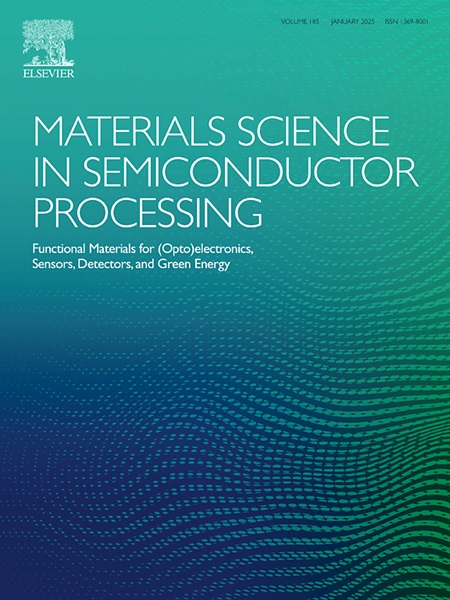氮基复合材料与砂岩增强储热性能的实验研究
IF 4.6
3区 工程技术
Q2 ENGINEERING, ELECTRICAL & ELECTRONIC
引用次数: 0
摘要
热能储存技术在现代获得了极大的兴趣,因为它们有助于减少对可再生能源的压力,并优化热能的使用。相变蓄热由于其高能量密度、低热损失和优异的热稳定性而特别具有吸引力。本研究提高了相变材料(PCMs)的热性能,包括导热性、稳定性和经济/环境影响。该设计引入了一种新型的PCM组合,即LiNO3-NaNO3-NaCl与砂岩相结合用于储热。砂岩的加入显著提高了PCM的热稳定性,在650°C的高温下,PCM的质量损失仅为8%,在600次热循环后,PCM的存储容量仅减少1.5%。此外,随着砂岩的掺入,导热系数从0.46 W/m·K增加到0.98 W/m·K。结构分析表明,pcm -砂岩复合材料保持了良好的组织结构,具有较强的力学黏结。在材料的形貌上,NaCl呈结晶状,而NaNO3呈亮点状。PCM砂岩复合材料的熔点为96℃,而凝固温度为130℃。测得比热容为1250 J/kg·K,材料密度为1700 kg/m3。加入砂岩后,储能系统的热效率达到86%,火用效率也达到86%。此外,通过将砂岩整合到PCM中,成本降低了9.09%,二氧化碳排放量减少了8.11%。本文章由计算机程序翻译,如有差异,请以英文原文为准。
Experimental development of hybrid nitride-based PCM with sand stones for enhanced thermal energy storage
Thermal energy storage technologies are gaining significant interest in the modern era as they help reduce the strain on renewable energy resources and optimize thermal energy used. Phase change heat storage is particularly appealing due to its high energy density, low heat loss, and excellent thermal stability. This study enhances the thermal properties of phase change materials (PCMs), including thermal conductivity, stability, and economic/environmental impacts. The proposed design introduces a novel PCM combination, LiNO3-NaNO3-NaCl integrated with the sandstones for thermal energy storage. The inclusion of the sandstones significantly improves the PCM's thermal stability, exhibiting only an 8 % mass loss after exposure to 650 °C and a mere 1.5 % reduction in storage capacity after 600 thermal cycles. Additionally, the thermal conductivity increases from 0.46 W/m·K to 0.98 W/m·K with the incorporation of the sandstones. Structural analysis reveals that the PCM-sandstone composite maintains a well-organized structure with strong mechanical bonding. In the material's morphology, NaCl appears in crystalline form, while NaNO3 is observed as bright spots. The melting point of the PCM sandstone composite is 96 °C, while solidification occurs at 130 °C. The specific heat capacity is measured at 1250 J/kg·K, and the material's density is 1700 kg/m3. The thermal efficiency of the energy storage system reaches 86 % with the addition of sandstones, and the exergy efficiency is also recorded at 86 %. Furthermore, the cost reduction achieved by integrating sandstones into the PCM is 9.09 %, while CO2 emissions are reduced by 8.11 %.
求助全文
通过发布文献求助,成功后即可免费获取论文全文。
去求助
来源期刊

Materials Science in Semiconductor Processing
工程技术-材料科学:综合
CiteScore
8.00
自引率
4.90%
发文量
780
审稿时长
42 days
期刊介绍:
Materials Science in Semiconductor Processing provides a unique forum for the discussion of novel processing, applications and theoretical studies of functional materials and devices for (opto)electronics, sensors, detectors, biotechnology and green energy.
Each issue will aim to provide a snapshot of current insights, new achievements, breakthroughs and future trends in such diverse fields as microelectronics, energy conversion and storage, communications, biotechnology, (photo)catalysis, nano- and thin-film technology, hybrid and composite materials, chemical processing, vapor-phase deposition, device fabrication, and modelling, which are the backbone of advanced semiconductor processing and applications.
Coverage will include: advanced lithography for submicron devices; etching and related topics; ion implantation; damage evolution and related issues; plasma and thermal CVD; rapid thermal processing; advanced metallization and interconnect schemes; thin dielectric layers, oxidation; sol-gel processing; chemical bath and (electro)chemical deposition; compound semiconductor processing; new non-oxide materials and their applications; (macro)molecular and hybrid materials; molecular dynamics, ab-initio methods, Monte Carlo, etc.; new materials and processes for discrete and integrated circuits; magnetic materials and spintronics; heterostructures and quantum devices; engineering of the electrical and optical properties of semiconductors; crystal growth mechanisms; reliability, defect density, intrinsic impurities and defects.
 求助内容:
求助内容: 应助结果提醒方式:
应助结果提醒方式:


